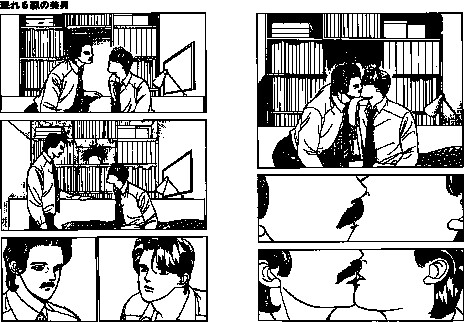I've drafted two preliminary sets of questions. I have a hell of a lot more work ahead of me but in the meantime I'll throw them up on here as a record of being somewhat productive today. I also found some fun little graphics that I will be posting at certain times after certain events. You figure out why.

The two sets of questions are fairly satisfactory so far. Check 'em.
Personal:
What is your age?
What is your biological sex?
What gender pronoun do you prefer?
Do identify with a particular race or ethnicity?
What does queer mean to you?
-Do you yourself indentify as queer?
-Could you talk about a few ways that you see yourself embodying what it means to be queer?
-Are there intrinsic links between queer struggle and challenging power? What are they?
-Is there a disconnect between queer theoretical discourse and queer praxis at the grassroots level?
-What constitutes this disconnect?
-Is their possibility for a synthesis?
-What might a synthesis look like?
What does masculinity mean to you?
-Are their different forms of masculinity due to race, class, etc.?
-Do you see cultural institutions reinforcing particular constructions of masculinity? What are they?
-Do you in identify with any attributes of masculinity? Why [not]?
-Do you see this as possibly conflicting with what it means to be queer? Why [not]?
What does femininity mean to you?
-Are their different forms of femininity due to race, class, etc.?
-Do you see cultural institutions reinforcing particular constructions of femininity? What are they?
-Do you in identify with any attributes of femininity? Why [not]?
-Do you see this as possibly conflicting with what it means to be queer? Why [not]?
Do you believe that the cultural connotations of what it means to be masculine as well as the cultural connotations of what it means to be feminine have limited the ways in which you can identify?
Theoretical:
If as Bulter posits, gender is a “construction that regularly conceals its genesis” and as such, the possibilities for the manifestation of alternative corporeal styles are entrenched in “punitively regulated cultural fictions” these alternative styles will necessarily always be suspect (Butler 1990, pg. 190). That said, despite the potential for re-entrenchment within dominant or hegemonic configurations of gender, are their possibilities for the construction of positive masculinities?
Do you believe that there are multiple levels or Deleuzian “plateaus” of gendered stylization? Does the stylized aesthetic of the sexed body also necessarily include “bodily gestures, movements, and styles of various kinds” (Butler 1990 pg. 191)? For example, if a male bodied individual maintains a bodily aesthetic characterized by signs that by normative cultural standards would be considered thoroughly masculine e.g. full beard, muscular build, etc. yet performs variant forms of gendered stylization what may we consider him/her?
If gender is also an extroverted temporal identity performed through a “stylized repetition of acts” spaces for non-normative masculinity can only be opened up once an individual has passed through certain feminized temporalities e.g. open up oral and anal modes of penetration, interrogating sexist practices, rescinding control. I believe the possibilities for “alternative” masculinities exist only within or after passing through these temporal manifestations of style. Only once an individual experiences feminine corporal attributes can they break away from the dominant paradigm of normative masculinity.



3 comments:
Wait, did I really just delete my own comment?
That kid so does not have better style than you...
Ah, but do you not, in relying upon these "feminine" styles of presentation (such as penetration) to "open up" new performances of masculinity, end up re-inscribing the distinction between the two, as well as the association of femininity with penetrability? See for example, Bersani's discussion in "Homos" of why male gay sex horrifies straights: because gay men "take their sex like women." This is a generalization that heterosexualizes and therefore serverely reduces the possibilities for female sexual embodiment. So, what might a non-penetrable femininity look like, and what might the advent of such a femininity "do" to our understanding of gay male sexuality--which so often relies upon a heterosexualized notion of femininity for its intelligibility?
Just a question. ;)
Post a Comment